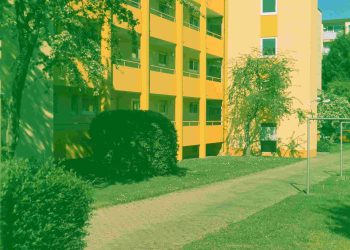Sustainability Practices for Improved Environmental Impact
What if everything we thought we knew about sustainability was flawed?
The modern environmental movement, with all its good intentions, often reduces sustainability to a series of checkbox actions: recycle your bottles, switch off lights, plant a few trees. But what if this piecemeal approach is, at best, a drop in the ocean? True sustainable living demands a revolution in how we think, live, and interact with the world. Allow me to share a journey—mine. A personal revelation about sustainability that tracks a journey from being a passive participant to an active architect of meaningful change.
A Lesson from My Backyard Garden
Let’s start small. My foray into sustainability began with a humble experiment in my backyard: growing my own vegetables. It wasn’t easy at first. I battled pests, dealt with changing seasons, and frequently turned to Google for advice. But one day, as I harvested juicy cherry tomatoes that tasted nothing like their supermarket counterpart, it hit me. Sustainability is a lot like gardening—it requires patience, adaptation, and above all, integration.
Yet gardening alone didn’t bring about a seismic environmental change. It served as a metaphor, a launching point. The same way my soil had to be enriched and nurtured consistently, our global systems need nurturing that goes far beyond surface fixes.
Challenging the Status Quo: Is Recycling Enough?
Let’s confront an uncomfortable truth: recycling, in its current form, is barely scratching the surface of the broader environmental challenge. While recycling can reduce landfill waste, it doesn’t tackle the root of our over-consumption problem or the inefficiencies embedded in modern production systems.
Consider this: the global recycling rate for plastic hovers around just nine percent. And even with higher rates of paper and metal recycling, the extraction of virgin materials is still skyrocketing. This raises the question—have we been lulled into a false sense of accomplishment when we toss our containers into a blue bin?
Interdisciplinary Insights: Using Systems Thinking
Here’s where we widen the lens. Systems thinking, borrowed from fields like psychology, technology, and philosophy, offers an alternative framework to address sustainability. Instead of treating problems in isolation, systems thinking encourages us to see how everything interconnects—energy production, biodiversity, water usage, waste disposal, and human behavior.
For example, take the food industry. To make the food system more sustainable, it’s not enough to focus on organic farming. We also need to address distribution mechanisms, consumer habits, and even cultural attitudes toward food waste. A technological approach—like leveraging AI to predict food demand in urban areas—can intersect with cultural philosophies about minimalism and ethical consumption.
To use another analogy, adopting systems thinking is akin to upgrading from black-and-white television to vibrant, immersive 4K. Suddenly, the complexity of sustainability doesn’t feel overwhelming—it feels actionable.
The Future of Work: Sustainability as a Career Norm
Fast-forward to the next few decades, and sustainability will no longer be an “add-on” to our daily lives; it will become the foundation of how we work and innovate. The World Economic Forum recently predicted that millions of new jobs will revolve around green initiatives, ranging from clean energy to sustainable urban planning. Careers in fields like environmental data analysis, circular economy design, and sustainable business strategies will dominate.
Here’s the silver lining: aligning yourself with this shift doesn’t require an immediate career jump. For example, if you’re in marketing, think about how your role can evolve to promote transparent, eco-friendly products. Are you an engineer? Consider adopting lifecycle design principles when developing new technologies. Even if you’re a student, the courses you choose now will shape your role in this coming revolution.
Practical Strategies for Real Transformation
Sustainability obsession often stumbles at the “ideas to execution” stage. Here are five actionable steps I’ve found valuable:
-
Redesign Your Consumption:
Shift from reactive purchases to intentional ones. Before acquiring anything, ask yourself, “Do I truly need this?” and “Can I acquire this sustainably?” -
Embrace ‘Repair Culture’:
Instead of discarding broken appliances or torn clothes, explore repair solutions. Entire industries focused on repair and refurbishment are emerging, from business platforms to hacker spaces. -
Leverage Technology:
Apps like Ecosia, which funds tree planting through your search queries, or JouleBug, which gamifies reducing energy consumption, can help align tech use with sustainability goals. -
Lobby for Change:
Individual action matters, but institutional change is transformative. Pressure governments to commit to renewable energy and reduced carbon footprints. -
Reimagine Corporate Accountability:
As consumers, we wield influence. Support companies with transparent sustainability initiatives while calling out those that engage in greenwashing.
The Call to Stewardship
At its heart, sustainability isn’t solely about saving the planet—it’s about redefining what it means to live responsibly. Think of Earth not as a resource center but as a partner in your daily existence. This fundamental attitude shift reshapes every decision, from how we nourish ourselves to the industries we support.
Philosopher Alan Watts once compared humans to the universe looking at itself. What if our role isn’t merely survival, but stewardship—caring for the systems that allow life to thrive?
Closing the Loop
Looking back to my garden, I realize it wasn’t just about the vegetables. It was about building a regenerative cycle—a closed loop where waste turns to compost, and compost nurtures new growth. Imagine extending this idea to every aspect of our lives, creating cycles that flourish in perpetuity. Sustainability isn’t an endpoint; it’s the act of harmonizing humanity with its origins.
What will your first step be?










